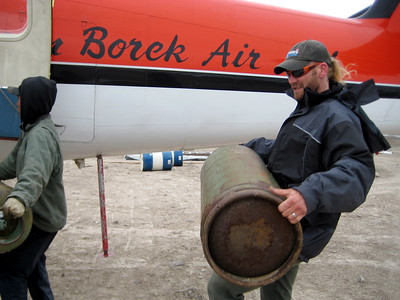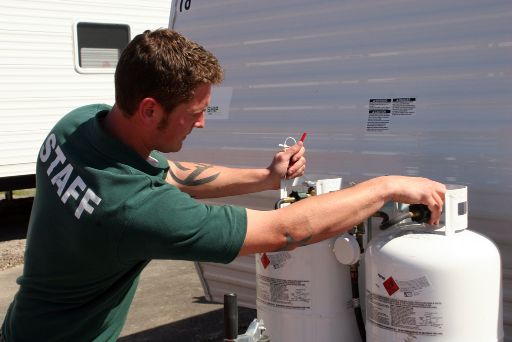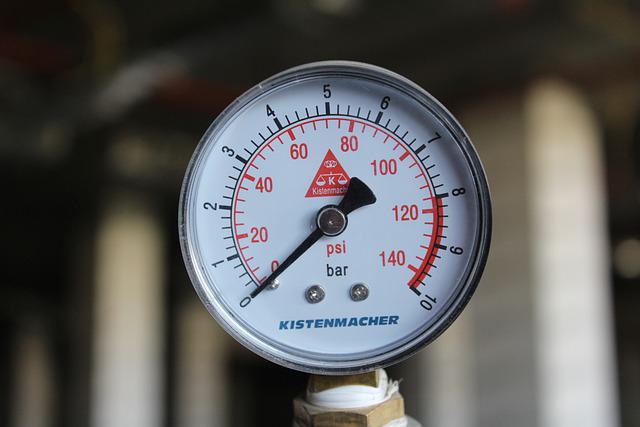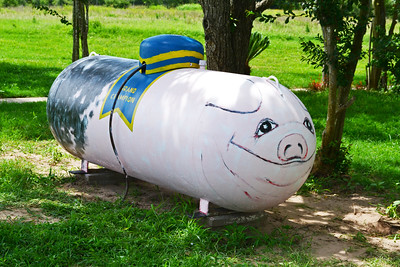
Propane is a versatile and widely used fuel source for heating, cooking, and powering various appliances. It’s stored in tanks of different sizes that are designed for safety and ease of transport.
One question that arises for many users is whether a propane tank is lighter when empty. This may seem like a simple question, but there’s more to it than meets the eye.
This article will explore the factors that influence the weight of propane tanks and provide an in-depth analysis of why propane tanks are indeed lighter when empty.
Understanding Propane Tanks
Propane tanks are designed to safely store and transport propane gas. They are typically made from high-strength steel or aluminum and come in various sizes, depending on the intended use. Commonly, propane tanks are classified into two categories: portable tanks (usually 20 pounds) and larger, more stationary tanks that can hold up to 100 pounds or more.
The Components of Propane Tanks
The weight of a propane tank is influenced by its different components, including:
- The Tank Shell: This is the outer protective layer of the tank, usually made from steel or aluminum. The shell’s weight contributes significantly to the overall weight of the tank.
- The Valve: A propane tank’s valve is essential for controlling the flow of gas from the tank to the appliance. It’s typically made from brass or other heavy-duty materials to ensure safety and durability.
- Internal Components: Propane tanks have several internal components such as the float gauge, liquid withdrawal valve, and pressure relief valve. These components add to the tank’s overall weight but are crucial for safety and efficient operation.
Propane Gas: The Variable Weight Component
Propane gas is the most significant variable when it comes to the weight of a propane tank. As a tank is filled with propane, its weight increases. Conversely, as propane is used and the tank empties, its weight decreases.
The amount of propane gas in a tank is usually measured in gallons or pounds, with one gallon of propane weighing approximately 4.24 pounds. Thus, a 20-pound tank can hold roughly 4.7 gallons of propane, while a 100-pound tank can accommodate about 23.5 gallons.
Tare Weight vs. Gross Weight
To better understand how the weight of a propane tank changes with its contents, it’s crucial to differentiate between tare weight and gross weight.
- Tare Weight (TW): This refers to the weight of an empty propane tank, including the shell, valve, and internal components. Each propane tank has its tare weight stamped on the collar or body, usually indicated as “TW.”
- Gross Weight (GW): The gross weight is the combined weight of the propane tank and the propane gas inside it. The gross weight of a full tank can be determined by adding the tank’s tare weight and the weight of the propane gas it can hold.
Propane Tanks: Lighter When Empty
Considering the factors discussed above, it’s evident that propane tanks are lighter when empty. The weight difference between an empty tank and a full tank can be significant, depending on the tank’s size and the amount of propane gas it can hold. For example, a 20-pound propane tank has a tare weight of about 18 pounds and can hold roughly 4.7 gallons of propane, which weighs approximately 20 pounds. Therefore, the gross weight of a full 20-pound propane tank is around 38 pounds, while an empty tank weighs only 18 pounds.
Safety Considerations
It’s essential to handle propane tanks carefully and responsibly, regardless of whether they’re full or empty. Here are some safety tips to consider when dealing with propane tanks:
- Regular Inspections: Check your propane tanks regularly for any signs of damage, rust, or leaks. Ensure that the valves and connections are in good working condition. If you notice any issues, contact a propane professional for assistance.
- Proper Storage: Store propane tanks in a well-ventilated, dry, and cool area, away from direct sunlight, heat sources, or flammable materials. Always keep tanks upright and secured to prevent tipping or falling.
- Safe Transport: When transporting a propane tank, ensure that it is upright and secured to prevent movement or tipping. Avoid leaving propane tanks in a closed vehicle for an extended period, as heat can cause pressure to build up inside the tank.
- Safe Disposal: If you have an old or damaged propane tank, do not attempt to dispose of it in regular trash or recycling. Instead, contact a propane professional or a hazardous waste facility to learn about proper disposal methods.
- Never Overfill: Overfilling a propane tank can be dangerous, as it does not leave enough room for the gas to expand with temperature fluctuations. Always follow the manufacturer’s guidelines for filling and do not exceed 80% capacity.
Understanding Propane Tank Exchanges and Refills
Many propane users opt for tank exchanges or refills when their tanks run empty. It’s essential to understand the differences between these options to choose the best method for your needs:
- Tank Exchanges: This is a convenient option, as you simply swap your empty tank for a full one at a retail location. However, it’s important to note that exchanged tanks may not be filled to their maximum capacity, and you may receive slightly less propane than if you opted for a refill.
- Tank Refills: Refilling your propane tank at a refill station often provides more value for your money, as you pay only for the propane you receive. Additionally, refilling allows you to retain your tank, ensuring that you know its history and maintenance records.
How Light is an Empty Propane Tank
The weight of an empty propane tank depends on its size and the materials used in its construction. A standard 20-pound propane tank, often used for grilling or small appliances, typically has a tare weight (empty weight) of around 17 to 20 pounds. This weight includes the tank shell, valve, and internal components.
Larger propane tanks, such as 100-pound tanks used for residential heating, have a higher tare weight due to their increased size and capacity. The empty weight of a 100-pound propane tank can range from 60 to 70 pounds.
It’s essential to note that the specific tare weight of a propane tank can vary depending on its manufacturer and design. The tare weight is usually stamped on the collar or body of the tank and is indicated by the letters “TW.”
Propane Tank Empty But still Heavy
If a propane tank feels heavy even when it’s empty, there could be several explanations:
- Residual Propane: Even after the propane tank appears to be empty, there might still be a small amount of residual propane left inside. This remaining propane can add some weight to the tank, making it feel heavier than expected. However, this residual amount is generally insufficient for practical use.
- Tare Weight: The tare weight of a propane tank refers to the weight of the empty tank, including the tank shell, valve, and internal components. Propane tanks are made from materials like steel or aluminum, which can be quite heavy. The tare weight of a 20-pound tank, for example, is typically around 17-20 pounds, while that of a 100-pound tank can be 60-70 pounds.
- Perception: Sometimes, the perceived weight of an empty tank may be influenced by personal expectations or prior experiences. If you have been handling lighter objects, an empty propane tank may feel heavier than it actually is.
If you’re unsure whether your propane tank is truly empty, you can check the propane level using a propane tank gauge, which can be purchased separately. Alternatively, you can try the warm water trick: pour warm water down the side of the tank and then feel the tank’s surface with your hand. If there’s propane left in the tank, the area where the propane level is will feel cooler than the rest of the tank.
Conclusion
Propane tanks are indeed lighter when empty, with the weight difference varying depending on the tank’s size and the amount of propane it can hold. Understanding the factors that influence the weight of propane tanks is essential for safe handling, transportation, and storage. By following safety guidelines and choosing the right propane tank exchange or refill method, you can ensure that you’re using propane responsibly and efficiently.

Mike is an experienced propane technician with over 15 years of professional experience in the field. He has dedicated his career to helping customers with their propane needs, from installation to maintenance and repair. Together with Jeremy, he co-founded this website to provide useful information and guidance to customers seeking reliable propane services.




